ENVIRONMENT
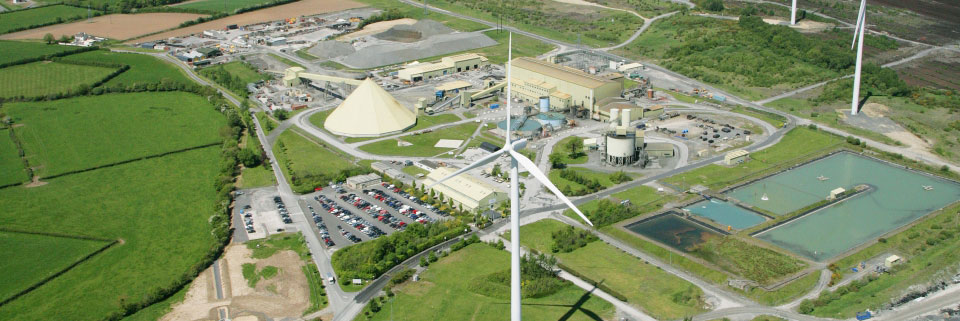

Most of the basic and modern amenities we cherish, contain natural resources as a core ingredient. Extraction of these resources becomes
necessary to sustain life. Across the globe, best practices with modern technology ensure that while we meet the growing needs of the nations, we
conserve biodiversity and the surrounding environment.
AS A DIVERSIFIED NATURAL RESOURCES COMPANY WITH A GLOBAL FOOTPRINT, WE CONTINUE OUR ENDEAVOUR TO
MINIMISE AND MITIGATE THE PRESSURE ON ENVIRONMENT AS A RESULT OF OUR OPERATIONS. WHETHER IT IS
OPTIMISING THE WATER CONSUMPTION, ENHANCING ENERGY PRODUCTIVITY, SAFEGUARDING BIODIVERSITY,
MAINTAINING AIR QUALITY OR RECYCLING AND UP CYCLING WASTE, WE HAVE THE SYSTEM AND, MORE IMPORTANTLY,
THE INTENT.
ENVIRONMENTAL PERFORMANCE HIGHLIGHTS
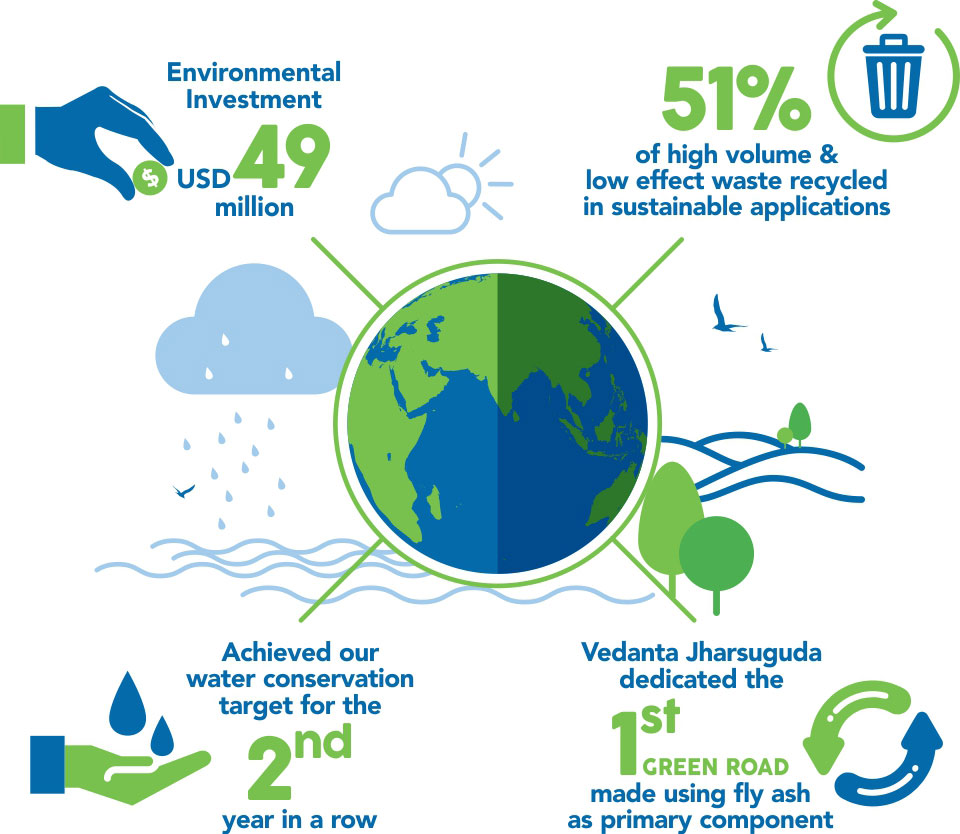
APPROACH
We understand the needs of the environment by engaging with our partners and the neighbouring communities at project sites. Through a systematic and process-oriented approach, underpinned by the spirit of entrepreneurship, we are mitigating adverse environmental impacts while creating value for our stakeholders and maintaining the social licence to operate.
Our Sustainable Development Framework comprises comprehensive policies, standards and guidance notes to rigorously manage environmental impacts. For the environmental priorities arising from the materiality process, we have developed specific objectives and targets, and review performance against these issues on a periodic basis. We are working towards implementing our Biodiversity Action Plans and are also finding new and innovative ways to reduce and recycle waste from our operations including fly ash, red mud, phosphorous gypsum, copper slag, etc.
ALL OUR OPERATIONAL SITES ARE NOW ISO 14001 CERTIFIED

During the reporting period, KCM and other mining companies discharged water from their operations releasing water from the tailings dam is a usual practice to ensure safety of the dam. On this occasion the releases resulted in a complaint from the local water department against all the concerned mining companies. KCM is working closely with the regulators and other stakeholders to develop and implement alternate satisfactory solutions.
WATER

For the natural resource industry, securing an adequate water supply continues to remain a key challenge. We address the key challenge of accessing water by using the resource more judiciously and through recycling and reuse.
Approach
We have a water policy and a water management standard that integrates with decision-making processes for all our new and existing projects; thereby ensuring that necessary measures are in place to avoid or minimise the impacts of our projects.
Our operations are located in geographies with varying water stress, and our water management plans take them into consideration. In some areas like Rajasthan which are quite dry and arid, we have implemented water conservation projects to achieve a zero-discharge status. For operations that are not located in water-stressed areas like KCM, CMT etc., we spearhead initiatives to conserve water and preserve water quality.
REDUCE
Aluminium business at BALCO has reduced its specific water consumption from 2.3 to 1.3 last year, saving 0.32 mn cubic metere of water. Initiatives taken are:
Installation of orifices in pipelines to reduce water pressure and flow.
Internal reuse of the process water to minimise waste water generation.
Use of ETP treated UF-RO water for cleaning and process like rodding, bake-oven process to minimise freshwater consumption.
With optimal use of UF-RO water, the business expects further reduction in the specific water consumption.
REUSE/RECYCLE
Our Oil and Gas business has improved its water recycling ratio from 66 % in FY-16 to 82% in FY-17. All our units in Rajasthan are Zero-Discharge operations. Some of the initiatives taken during the year are:
Utilising the pit water for the operation.
The Reed wastewater system helped in water and energy conservation due to non-use of electrical energy in treating the wastewater.
Installation of the Reed based wastewater treatment system and reuse it back in the process.
Our CAIRN oil & gas business is meeting
82%
of its total water requirement through recycled water
REPLENISH
Groundwater recharge structure, measuring 1,200 sqm, developed in Township Hospital of Chanderiya Lead Zinc Smelter with a potential to conserve 900 m3 of rainwater per year under normal rainfall condition.
Deepening of nine water ponds in the neighbouring villages of Sindesar Khurd Mine, resulted in increased water holdup capacity by
2,77,575 M3
| Performance |  |
| CONSUMPTION & CONSERVATION SNAPSHOT | in million m3 | |
| FY 2016-17 | FY 2015-16 | |
| Total Water Consumption | 277,609,052 | 236,833,021 |
| Water Recycled / Reused | 66,813,316 | 53,626,679 |
WE RECYCLED 24% WATER IN FY 2016-17
This year, we achieved
3.93 million m3
water savings against the targeted savings of 2.26 million m3
ENERGY & CARBON

Climate change poses a real and credible risk to our way of life on this planet. Managing it calls for collective efforts on mitigation and adoption of innovative technologies.
Vedanta acknowledges the global concern on climate change and recognises that concentrated and sustained global actions are required to manage the scale of the problem and to adapt to its impacts. Our operations are mostly located in developing countries where growth of the country and human indices are dependent on reliable and affordable coal based power.
Approach
The energy and carbon scenario is a continuously emerging one. Post COP 21, countries across the globe have committed to implement their National Determined Contribution (NDC) towards minimising the climate change impact. Our Sustainable Development Framework includes an Energy and Carbon Policy, and Energy and Carbon Management Standard.
We are aware that global concern on climate change can bring regulatory changes, introduction of implicit and / or explicit carbon taxes in the host countries we operate in. This along with evolving behaviour of the environmentally conscious consumer are some of the factors that may affect our business operations - positively or detrimentally. In view of this, we have revised our carbon policy and developed a full-fledged carbon strategy for the group.
WE ARE COMMITTED TO THE CAUSE OF CLIMATE CHANGE AND CONSTITUTED CHIEF OPERATING OFFICERS (COO'S) FORUM FROM THE BUSINESSES TO ADVISE GROUP EXECUTIVE COMMITTEE ON CLIMATE CHANGE MANAGEMENT PROGRAMME.
Our energy and carbon management hinges on a two-pronged approach: improving energy and process efficiency, while diversifying our energy portfolio to include renewable energy to the extent possible. We are committed to invest in newer technologies and processes to enhance our energy efficiency.
The Carbon Strategy
While developing the carbon policy and strategy, we took inputs from our stakeholders. Our focus is to adapt to the impact of climate change. The strategy is to work on the water, energy and waste management practices to minimise the climate change impact to the business. We are also working with our community in spreading awareness on the climate change, water management, sustainable agriculture and methods that support communities in becoming adaptable to potential climate impacts.
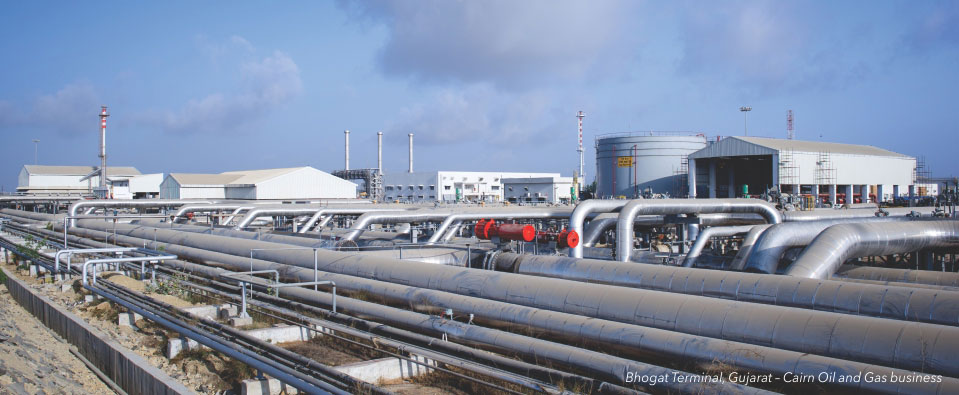
We are evaluating options of formulating internal carbon price suitable to the business and expect to complete this exercise soon. The challenge is Company's presence in multiple commodity businesses like metal, mining, oil & gas, power, port etc.
Vedanta is committed to this effort through its own progressive energy and carbon programme that forms an integral part of our vision for sustainable development and is consistent with our business goals.
WE ARE COMMITTED TO IMPLEMENT THE CARBON POLICY THROUGHOUT OUR BUSINESSES. WE ARE CONSIDERING FORMAL GHG REDUCTION TARGETS AND EXPECT TO ACHIEVE UP TO 16% REDUCTION IN CARBON INTENSITY FOR THE BUSINESS BY 2020 FROM A 2012 BASELINE.
16 OUT OF OUR 47 OPERATIONS ARE ISO 50001 CERTIFIED
| Performance |  |
| DIRECT & INDIRECT ENERGY CONSUMPTION | in million m3 | |
| FY 2016-17 | FY 2015-16 | |
| Direct Energy Consumption | 413.39 | 394 |
| Indirect Energy Consumption | 14.61 | 11 |
| Total Energy | 428 | 405 |
| GHG EMISSIONS - GROUP WIDE | in tons of CO2 equivalent |
| FY 2016-17 | FY 2015-16 | |
| Scope 1 (Direct) | 51,896,907 | 39,581,088 |
| Scope 2 (Indirect) | 1,432,665 | 1,567,605 |
We calculate and report the Greenhouse Gas (GHG) inventory i.e. Scope 1 (process emissions and other direct emissions) and Scope 2 (purchased electricity) as defined under the World Business Council for Sustainable Development (WBCSD) and World Resource Institute (WRI) GHG protocols.
The increase in energy consumption GHG emissions is due to ramp up of our aluminium and power plant business. While GHG emission has increased the GHG intensity for the business has reduced about 8% over FY12 as the base year.
Energy Efficiency
In the reporting year, we focused more in raising awareness about the need for energy efficiency and putting in place an infrastructure that would conserve energy across its lifecycle. We envision that by enhancing awareness, the change effected will be more impactful and longer-term.

Sustainable usage of natural resources is key to preserving resources that can be available for future generations. In August 2016, Skorpion Zinc conducted a Sustainability Awareness Campaign at Rosh Pinah Academy school for students studying from grade 1 to 5. The campaign focused on the importance of energy and water conservation measures.
A total of 60 learners and 5 teachers were involved in the campaign.
In December 2016, TSPL launched Club Urja, an initiative that seeks to promote energy efficiency and conservation through Awareness, Education and Engagement.
The initiative seeks to involve 100,000 stakeholders,
including students, teachers, housewives, farmers and other significant consumers of electricity, as well as academic institutions, NGOs, Govt. Departments and Press clubs, within three years
Hindustan Zinc office at Udaipur became Rajasthan's first Platinum Green Building.
It achieved energy savings by 27% and water use reduction by 37%.
On-site renewable energy of 100 kWp is installed that would generate 162,000 units every year, offset 15% energy requirement by Renewable Energy. This is in line with our short and long-term GHG intensity reduction target.
Clean Energy
In addition to optimising our energy consumption, we are also looking at diversifying our energy portfolio. Mindful of the long-term impact of traditional grid-energy, we are evaluating renewable energies like solar and wind.
| CASE STUDY |
MAKING ENERGY WHEN THE SUN SHINES
HZL

THE INDIAN GOVERNMENT UNDER THE LEADERSHIP OF MR. NARENDRA MODI, HAS A STRONG FOCUS ON NON-CONVENTIONAL ENERGY SOURCES AND IS LOOKING TO ULTIMATELY PRODUCE 100 GW POWER FROM SOLAR ENERGY.
In view of this, HZL in Rajasthan set an ambitious target of generating
115 MW
of Solar Energy
in the short-term and scale up solar energy as a business arm in the years to come. In the first phase, we have set up a 16 MW solar energy project at an investment of INR 800 million commissioned in March 2017.
Out of 16 MW, 12 MW solar power project installed at Zinc Smelter.
The 4 MW solar power project at Rajpura Dariba of Hindustan Zinc in the district of Rajsamand in Rajasthan.
The 12 MW project is the largest solar energy project in the district of Udaipur (both the projects are installed on waste land parcel, where no other activity could be done).

BIODIVERSITY

Considering the number of sectors dependent on natural products, loss of biodiversity must be seen as an economic as well as an enviornmental loss. Being a responsible natural resources company, we actively follow the 'no-net-loss' principle and protect or rejuvenate the biodiversity.
Protecting the biodiversity is an integral part of Vedanta's commitment to sustainable development. Our Biodiversity Management Programme is developed to avoid, minimise or compensate the loss of the biodiversity attributes resultant to the new project or the major expansion. We undertake Environmental Social Impact Assessment (ESIA) assessment for any new project or major expansion to help us understand the presence of critical biodiversity attributes in the proposed area of the project and develop biodiversity action plan to mitigate the impact of our operation on the same.
Approach
We have a dedicated 'Biodiversity Policy and Management Standard' in line with international standards and guidelines of International Finance Corporation (IFC). It advises how disruption is to be avoided, minimised and compensated for, from project scoping to site closure and beyond.
Our policy, technical standard and approach to biodiversity management is aligned to IFC standards and ICMM guidelines. Our businesses seek consultation from domain experts in identifying biodiversity related business risk and management of the same.
None of our operations are located in world heritage sites. However, our Black Mountain Mine operations spread across approx. 38,000 ha in South Africa and Skorpion Zinc mine covering approx. 8,000 ha in Namibia are located in key biodiversity hotspot areas as identified by Conservation International (CI). Both these operations are governed by robust Biodiversity Management Plans which have been developed by regional biodiversity experts.
VEDANTA RESOURCES IS A SIGNATORY TO THE INDIA BUSINESS AND BIODIVERSITY INITIATIVE, A NATIONAL PLATFORM FOR BUSINESS AND ITS STAKEHOLDERS AROUND MAINSTREAMING SUSTAINABLE MANAGEMENT OF BIOLOGICAL DIVERSITY INTO BUSINESS STRATEGY.
Revitalising Ecologies
Several initiatives are undertaken by us at Vedanta to rejuvenate the biodiversity of the locations we operate in. Some of them are:
INITIATIVES
RESPONDING PROACTIVELY TO THE BIODIVERSITY RISK | GAMSBERG, SA
The Gamsberg mine is located in the Succulent Karoo Biodiversity hotspot area - one of the four hotspots in South Africa and one of the 35 hotspots in the world. This area is home to more than 6,000 species of plants, (40% of which are only found here) and also hosts 250 birds, 80 mammals and 32 reptile and amphibian species. Although the Gamsberg mine promises to reap rich economic returns, we have taken multiple steps to ensure that this doesn't come at the cost of biodiversity.
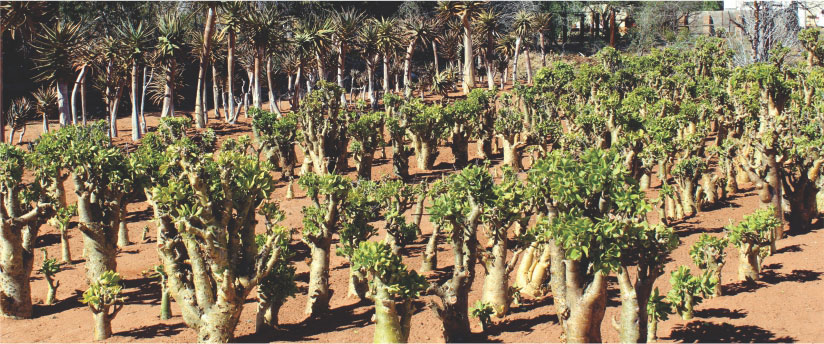
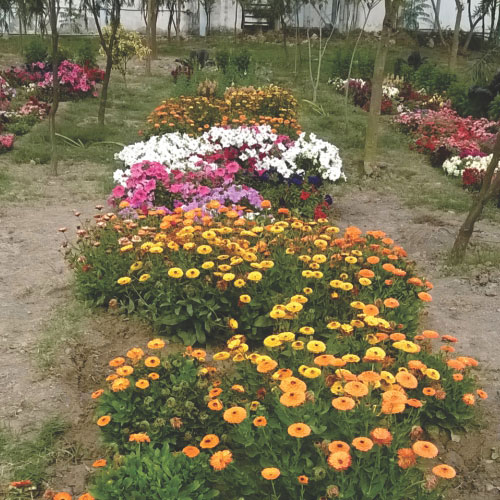

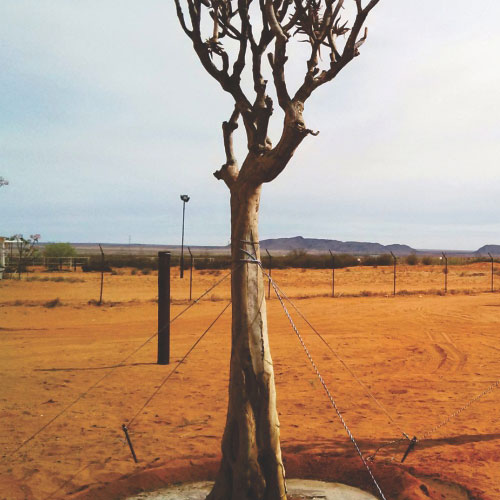
EMP (Environmental Management Programme) and BMP (Biodiversity Management Plan) are used to monitor and to guide the construction phase, so that the Environmental footprint is minimised
Continuous harvesting is done in the current mining footprint area
The plant species will be used during the rehabilitation of the mine as it demonstrates vast species from the Succulent Karoo Biodiversity Hotspot
A thorough search and rescue operation in mining footprint area, led to harvesting of 10,810 plants. An additional 59,257 and 17,959 plants were harvested in 2015 and 2016 respectively and significant discoveries were made in the tailings facility
AIR QUALITY

Clean air is essential to maintaining the delicate balance of life on this planet - not just for humans, but wildlife, vegetation, water and soil. At Vedanta, we are committed to identify and manage emissions to air from point sources and from process activities associated with combustion.
As part of our ambient air quality monitoring process, we monitor Particulate Matter (PM), SOx and NOx. We also monitor lead emissions from our zinc operations, fluoride emissions and Polycyclic Aromatic Hydrocarbons (PAHs) from our aluminium operations as per our Environmental Management Standard. We do not record emission of ozone-depleting emissions as this is not a material issue to our operations.
| Performance |  |
| STACK EMISSIONS | in MT | |
| Parameter | FY 2016-17 | FY 2015-16 |
| Particulate Matter | 11,056 | 7,239 |
| SOx | 178,324 | 157,484 |
| NOx | 44,935 | 49,464 |
*There was a misprint last year in the values of NOx it was reported as 55,975 MT. The actual values are mentioned in the table
There was a 13.23% increase in SOx and 52.72% increase in particulate matter emissions due to 32.79% increase in production in our Aluminium businesses.
This year we have observed reduction in NOx emission because of the optimum utlilisation of NOx burners installed at our power plants.
We continue to maintain a keen eye on our air quality management outcomes,through following steps:
Good Management Practices (GMPs) and pollution control techniques like bag houses Electrostatic Precipitators (ESP)
Controlling and monitoring stack emissions of particulate matter at most of our operations
Dust minimising processes like bag filters, scrubbers and dry fog systems with water sprinklers are used while transporting extracted materials like bauxite, coal, lime and alumina. Covered trucks with tarpaulin ensure no spillage or dust generation
Our power plants run on coal which leads to particulate and other emissions resulting from naturally occurring impurities in the coal. We have deployed hybrid ESP for removal of particulate matter that also contributes to removal of other impurities attached to the particulate matter.
The fly ash, a by-product from the ESP, is reutilised in making cement bricks and roads or is disposed of at authorised ash ponds in accordance with the local regulatory requirements.
INITIATIVES
INNOVATION & PROCESS IMPROVEMENTS FOR ZERO EMISSIONS RDG, BARMER
The Raageshwari Deep Gas (RDG) field in Barmer Basin has excellent gas quality with low CO2 and no H2S. But hydraulic fracturing treatment is required for the recovery of oil and natural gas due to RDG's thinly laminated volcanic layer.
During the reporting period, our Cairn Oil and Gas Business adopted improvement in Frac Design like propant density, tighter spacing, multiple fracs, and introduced innovations like Addressable Switch Firing System innovative methods to achieve nearly zero emissions during well testing and clean-up activities.
THIS RESULTED IN REDUCED OPERATING COST BY USD 0.96 MILLION.
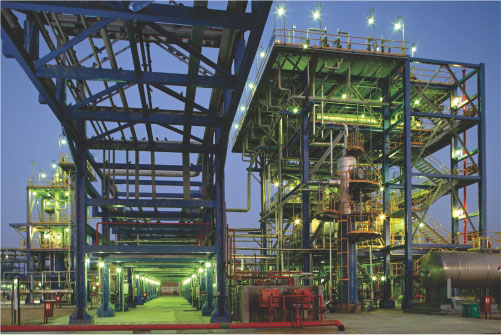
WASTE
Waste generation for the natural resources industry is inevitable, but its irresponsible disposal is not. With the right mindset, technology and innovation, there is a tremendous wealth generation opportunity, in addition to the elimination or minimisation of waste.
At Vedanta, two kinds of waste are generated, hazardous and non-hazardous. The hazardous waste include used/spent oil, waste refractories, aluminium dross, spent pot lining and residual sludge from smelters, while the non-hazardous (high volume, low effect) wastes we generate includes fly ash (from captive and merchant power plants), jarofix (from zinc smelting), slag, lime grit (process residues from smelters and aluminium refineries) and phospho gypsum (phosphoric acid plant).
APPROACH
Our sustainability framework includes a Resource Use and Waste Management Technical Standard and supporting guidance notes. We follow the principle of first reducing the waste, quantitatively as well as qualitatively (reducing the toxicity), and then performing the recovery and recycle (either ourselves or through authorised recyclers). The last stage is disposal in landfill or by incineration, using authorised, licenced and secured landfills. We aim to remain environment friendly across all the stages.
WASTE TO VALUE INITIATIVE
This is being cascaded across our businesses and is also actively pursued by our Chairman Mr. Anil Agarwal in his town hall addresses.
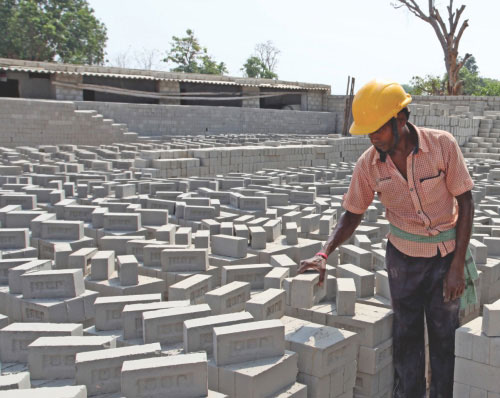
| WE HAVE RECYCLED |
51% |
OF OUR OVERALL HIGH VOLUME AND LOW EFFECT WASTE IN SUSTAINABLE APPLICATIONS AND ARE CONTINUING TO DEVELOP NEW AND INNOVATIVE WAYS TO INCREASE THE PROPORTION OF WASTE WE RECYCLE.
Performance
Continuous and consistent efforts on waste recycling are in progress, with special focus of senior management in tracking the waste disposal rate in sustainable applications. Much of our generated waste rock and overburden is utilised in secondary construction work at the units. For example, in raising tailing dam heights, and backfilling mined out areas and exhausted mine pits.
HZL's state-of-the-art Central Research & Development Laboratory continues to explore how to recover more metals from mining & smelting operations, efficiently to minimise waste.
| WASTE GENERATION | in million MT | |
| Business | FY 2016-17 | FY 2015-16 |
| High Volume & Low Effect Waste | 16.57 | 11.90 |
| Hazardous Waste | 0.32 | 0.86 |
| HIGH VOLUME & LOW EFFECT WASTE MANAGEMENT | in million MT |
| Fly Ash | Slag | Red Mud | Gypsum | Jarosite | Total | |
| Generated | 11.72 | 1.66 | 1.62 | 1.09 | 0.46 | 16.57 |
| Recycled | 6.20 | 0.98 | 0.13 | 1.0 | 0 | 8.38 |
| % | 53 | 58 | 9 | 100 | 0 | 51 |
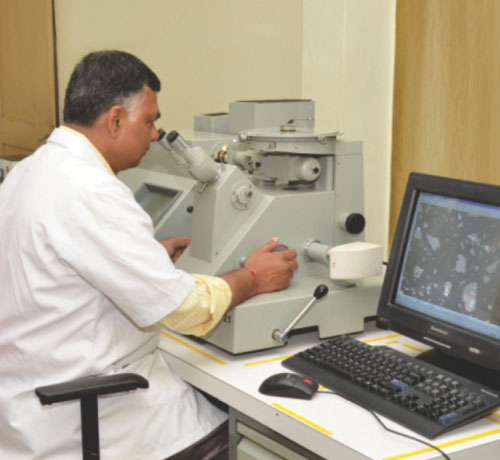
The total fly ash utilisation increased to
53%
in FY 2016-17 from 47% in the previous year.
INITIATIVES
SETTING THE STANDARDS FOR TAILING RISK MANAGEMENT
In pursuit of a systematic preventive strategy, we undertook a preliminary risk assessment for tailings dams and ash storage facilities across our business, which identified nine of potentially high risk facilities.
These nine facilities were subjected to a detailed Tailings Risk Assessment from third party expert organisation. No critical risks were identified. Where gaps were highlighted, business commenced implementation of corrective actions, including further analysis in two cases to ensure communities in close proximity are not at risk.
For governance and ongoing management, tailings related risks have been elevated to group risk register and a tailings management workshop has been held for 40 employees across businesses. We have also developed Vedanta Tailing / Ash Storage Management Standard that is being implemented by all businesses.
COLLABORATING FOR SUSTAINABLE WASTE MANAGEMENT SOLUTION
KCM - COPPER BUSINESS
The Nkana Smelter Complex in Zambia was shut down in 2009. A project to dispose of the expired chemicals through neutralisation and solidification was initiated in September 2015 and completed in December 2016. As a result of this project, KCM Nkana is now compliant with the requirements for storage of hazardous waste prescribed in the Eighth Schedule of the Environmental Management (Licensing) Regulations of 2013.
The treatment and disposal of the chemicals involved the following steps:
Seeking approval of Zambia Environmental Management (ZEMA) to conduct the disposal of the expired chemicals
Identification of the site to neutralise and solidify chemicals. The selected site was bunded and concreted to contain any accidental spillages within the bund wall.
Neutralising of chemicals by mixing them with lime. The neutralised material was then mixed with sand and stone aggregates, before adding cement for solidification. Each chemical was treated separately.
The resulting mixture was scooped with shovels and placed in 50kg bags to dry. Dried material was transported to a safe site for disposal.
A total of 1,389 kg powdered chemicals and 6,630 litre of liquid chemicals were treated during this project.
MANY ROADS TO PROSPERITY
JHARSUGUDA ALUMINIUM BUSINESS
The road to prosperity can be paved with materials that may seem of lesser value. In order to create greener solutions for infrastructure development, Vedanta made use of multiple 'wastes' to create 'wealth'.
In August 2016, Vedanta Jharsuguda dedicated the first 'Green Road' made using fly ash. Around 30% of the cement content in the concrete was replaced by fly ash. This is the first village road in the state of Odisha to be constructed using fly ash as a prime component. It is also a successful example of industry-academic interface, as the road was designed by IIT, Bhubaneswar.

| CASE STUDY |
LISHEEN MINE - CLOSURE, RESTORATION
AND AFTERCARE MANAGEMENT PLAN
AND AFTERCARE MANAGEMENT PLAN
Mining activity at the Lisheen Mine in Ireland was concluded in November 2015, with milling ceasing in December 2015 after 17 years of operation. Focusing on physical closure of the mine and aftercare of the site, a best practice mine closure plan has been implemented to fully address regulatory authority permit requirements.
The cessation of mining at Lisheen was not the end of the story, as the mine is now in an 'active closure' phase. The closure programme is among the world's finest examples of environmentally sensitive mine closure and rehabilitation. Some socio-economic and environmental initiatives were taken by the company to ensure well-being of the community and the environment.
Some of key focus areas of closure plan are:
Ensuring that the underground workings cannot collapse: Leading to surface subsidence
Removing all surface and underground plant and equipment
Allowing the mine workings to refill with clean water
Blocking and sealing all access to the underground workings
Fully engineered covering of the tailings deposition facility to provide multiple after uses from animal grazing to solar power or energy crops
Creating a space that will be attractive to other industries
Supporting Lisheen staff during the closure, from up skilling and training grants to redeployment at other Vedanta operations

